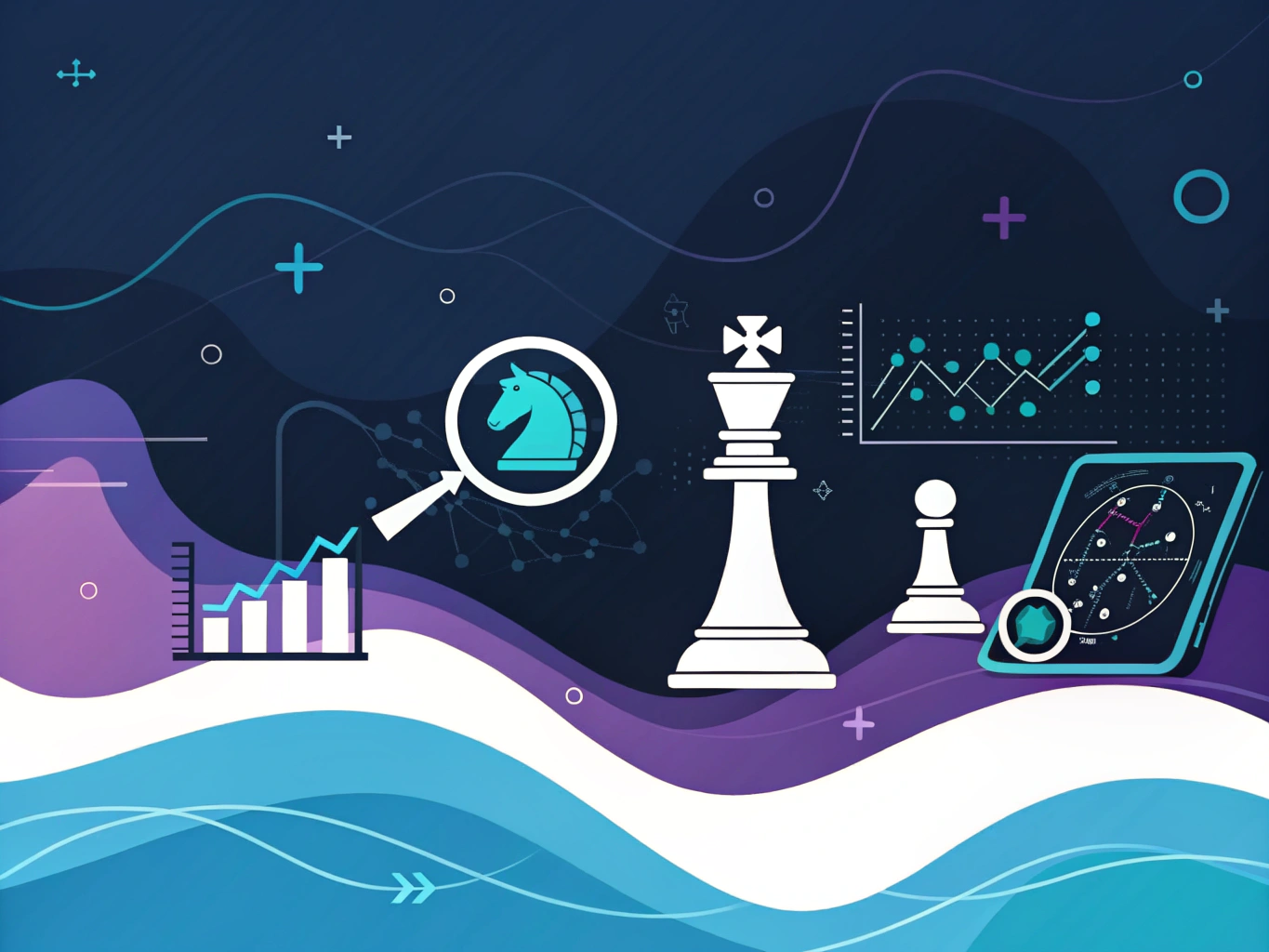Remember when keeping tabs on competitors meant manually checking their websites and social media every day? Yeah, those days are officially over. The competitive intelligence landscape has transformed dramatically – and if you’re still doing things the old way, you’re probably missing out on some game-changing insights.

Here’s the thing about modern competitive intelligence tools: they’re not just glorified Google Alerts anymore. We’re talking about sophisticated AI systems that can process massive amounts of data in real-time, spotting patterns and opportunities that human analysts might miss. It’s like having a team of super-smart interns working 24/7, except they never need coffee breaks or complain about doing market research at 3 AM.
Understanding Modern Competitive Intelligence Solutions

Let’s cut through the noise and get real about what these tools actually do. At their core, competitive intelligence tools are your digital spies – but the legal, ethical kind. They monitor everything from pricing changes and product launches to social media sentiment and SEO strategies. Tools like Crayon and Klue have revolutionized how businesses gather intel, making it possible to track hundreds of data points across thousands of sources automatically.
The Evolution of Market Intelligence Tools
Remember when we thought having a competitor’s price list was enough? Those days feel almost quaint now. Modern service providers have evolved into comprehensive platforms that deliver bi-directional insights – meaning they don’t just collect data, they actually help you understand what to do with it.
What’s fascinating is how AI filters have become the secret sauce in these tools. They’re not just gathering information; they’re actually learning what matters to your business. It’s like having an AI assistant that knows exactly which competitor moves deserve your attention and which ones are just noise.
The Real Value for Sales Teams
Here’s where it gets interesting for sales teams specifically. These aren’t just marketing tools – they’re becoming essential weapons in the sales arsenal. When your sales team has real-time access to competitor intelligence through platforms like Jungle Scout or Kompyte, they can adjust their pitch on the fly based on actual market dynamics, not just gut feelings or outdated information.
Core Components of Modern Competitive Intelligence Tools
Look, I get it. When you’re evaluating competitive intelligence tools, it’s easy to get lost in the feature matrix comparison hell. But here’s what really matters: can these tools actually help you make better decisions for your business?
The competitive intelligence landscape has evolved dramatically from the days of manually stalking competitor websites and setting Google Alerts. Today’s tools are like having an entire market research team working 24/7, powered by AI that never sleeps (though sometimes it needs a coffee break, if you know what I mean).
Data Collection Capabilities That Actually Matter
The best competitive intelligence tool isn’t necessarily the one with the most data – it’s the one that gets you the right data. Think of it like having a really efficient personal assistant who knows exactly which competitor moves matter to your business. Modern CI tools should offer real-time monitoring across multiple channels, but more importantly, they need to filter out the noise.
Analysis Features That Make Sense of the Chaos
Here’s where things get interesting. The latest generation of tools (like Crayon and Klue) aren’t just data aggregators – they’re insight generators. They use AI to spot patterns humans might miss, kind of like having a data scientist who never needs sleep. But here’s the catch: AI-powered insights are only as good as the human strategy behind them.
Making Competitive Intelligence Work for Your Business

The secret sauce isn’t in having the fanciest competitive intelligence solution – it’s in knowing how to use it. I’ve seen too many businesses invest in sophisticated market intelligence tools only to use them like a glorified Google Alert system.
Your sales team needs actionable insights, not data dumps. The best tools offer bi-directional integration with your existing systems, making competitive intelligence part of your daily workflow rather than another tab to check. Think of it as embedding a competitive radar directly into your business operations.
The AI Filter Revolution
AI filters are changing the game in competitive intelligence. They’re getting scary good at understanding context – differentiating between a competitor’s major product launch and their CEO’s lunch tweet. But they still need human oversight. The best competitive intelligence companies are the ones that understand this balance between automation and human insight.
Maximizing ROI with Your Competitive Intelligence Tool
Look, I’ve seen too many brands throw money at fancy competitive intelligence tools only to end up drowning in data without actionable insights. It’s like having a Ferrari but never learning how to drive stick—pretty to look at, but not getting you anywhere fast.
The key to actually getting value from your competitive intelligence tool isn’t just in picking the right one (though that matters). It’s in how you implement it. And trust me, as someone who’s helped hundreds of brands optimize their tech stack, I’ve seen the good, the bad, and the “why did we spend money on this?”
Implementation Best Practices That Actually Work
First things first: Start small. I don’t care if you’ve got the budget of a Fortune 500—begin by tracking just 2-3 key competitors and a handful of metrics that directly impact your bottom line. You can always scale up, but starting with everything turned on is like trying to drink from a fire hose.
Set up bi-directional workflows between your competitive intelligence tool and your existing systems. If you’re using Klue or Crayon, their Salesforce integrations are solid. If you’re more focused on market intelligence, tools like Brand24 can pipe directly into your content strategy meetings.
Future-Proofing Your Competitive Intelligence Strategy
Here’s what nobody’s talking about: AI is going to fundamentally change how we gather and analyze competitive intelligence. We’re already seeing it with tools that can predict competitor moves based on historical patterns. But—and this is crucial—AI isn’t going to replace human insight. It’s going to augment it.
Think of your competitive intelligence tool as an intern who never sleeps. They’ll gather data 24/7, flag patterns you might miss, and even suggest actions. But you still need humans to interpret context, understand nuance, and make strategic decisions.
Conclusion: The Bottom Line
Choose a tool that matches your current needs but can scale with you. Don’t get seduced by feature lists—focus on what you’ll actually use. And remember: the best competitive intelligence tool is the one your team will actually engage with consistently.
The market’s only getting more competitive. But with the right tool and implementation strategy, you’re not just keeping up—you’re staying ahead. Just make sure you’re not using these tools to play defense. Use them to spot opportunities, not just threats. That’s where the real magic happens.
For those exploring new platforms, understanding the Amazon search engine marketing is crucial, including when to consider FBM Amazon as part of your fulfillment strategy. Additionally, staying informed about the latest photography trends can give your product listings a visual edge.
Lastly, if you’re considering expanding into new sales channels, ensure you know how to navigate platforms like TikTok or or evaluate if Amazon FBA is worth it for your business strategy. Or, if you’re looking to optimize without keeping stock, learn how to sell on Amazon without holding inventory.
For those considering diversifying, understanding the nuances of Walmart Seller Central and utilizing eBay advanced search features can be advantageous. And, if needed, knowing how to cancel bids on eBay is also beneficial.
Check out our blog for more insights on leveraging AI tools effectively in your business strategy.
👉👉 Create Photos, Videos & Optimized Content in minutes 👈👈
Related Articles:
- How AI Transforms Amazon Listings into Irresistible Buyer Magnets
- Top GPT-4o Assistants for Business | ProductScope AI
- Best AI Image Tools Every E-commerce Business Should Know
Frequently Asked Questions
What does it mean with “Bi directional?”
Bi-directional competitive intelligence refers to the process of not only gathering information about competitors but also understanding how your own company’s strategies and actions are perceived by competitors. This approach helps businesses to adapt and refine their competitive strategies based on how they are viewed externally, leading to more effective market positioning.
What do competitive intelligence companies do?
Competitive intelligence companies specialize in gathering, analyzing, and interpreting information about competitors and market trends to support strategic decision-making. These companies provide insights that help businesses understand competitive landscapes, anticipate market shifts, and identify opportunities or threats, enabling them to make informed strategic moves.
In AI filters, which tool can be used to gather competitive intelligence from web sites?
Tools like SEMrush, SimilarWeb, or platforms with secure access like Cobalt login can be used to gather competitive intelligence from websites. They offer insights into competitors’ traffic sources, keyword strategies, and audience demographics, allowing businesses to benchmark their performance and optimize their digital marketing strategies accordingly.
What tool allows you to search external competitive intelligence research?
Tools such as Crayon and LexisNexis allow users to search for external competitive intelligence research. These platforms aggregate data from various sources, enabling businesses to access industry reports, competitor news, and market analysis that are crucial for strategic planning.
What tool allows you to search external competitive intelligence research (e.g. IDC, Gartner)?
Platforms like Gartner and IDC themselves offer tools and services that allow businesses to access comprehensive industry research and competitive intelligence. These tools provide in-depth analysis, market forecasts, and strategic insights from a range of industries, helping companies to make data-driven decisions.
About the Author
Vijay Jacob is the founder and chief contributing writer for ProductScope AI focused on storytelling in AI and tech. You can follow him on X and LinkedIn, and ProductScope AI on X and on LinkedIn.
We’re also building a powerful AI Studio for Brands & Creators to sell smarter and faster with AI. With PS Studio you can generate AI Images, AI Videos, Chat and Automate repeat writing with AI Agents that can produce content in your voice and tone all in one place. If you sell on Amazon you can even optimize your Amazon Product Listings or get unique customer insights with PS Optimize.
🎁 Limited time Bonus: I put together an exclusive welcome gift called the “Formula,” which includes all of my free checklists (from SEO to Image Design to content creation at scale), including the top AI agents, and ways to scale your brand & content strategy today. Sign up free to get 200 PS Studio credits on us, and as a bonus, you will receive the “formula” via email as a thank you for your time.
